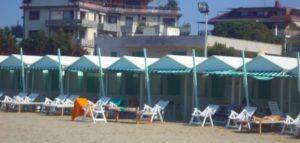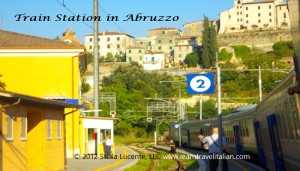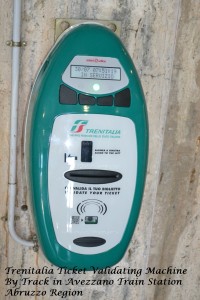Ferragosto – Italian Holiday Time in August
Follow Caterina during Ferragosto -the major holiday that takes place in Italy during August -in the Conversational Italian for Travelers series of books!
The Conversational Italian for Travelers textbook begins each chapter with a dialogue from a story about the character Caterina, an American girl who travels to Italy to visit her relatives. As the story continues from one chapter to the next, we learn Italian, and about Italy, in an engaging way through Caterina’s experiences.
Ferragosto – Italian Holiday Time in August
Ferragosto – just what is this ancient holiday that still becomes the focus of every Italian during August? While Italy is known as a destination for world travelers seeking to enjoy the Italian landscape, art and food, it is less well-known how Italians enjoy their summertime vacation.
In our story, Caterina, an Italian-American girl, is a guest in Milan at the house of her Italian cousin Pietro and his wife Francesca. She arrives in Italy just before the start of the important Italian summer holiday called “Ferragosto”. The holiday is officially one day – August 15 – and is a holiday celebrated by the Catholic church. But, most Italians take off at least a week and often two or even three weeks, as people in the cities and even smaller towns escape from the to summer heat to the mountains or beach to enjoy time with their families.
If you want to feel like an insider during the Ferragosto holiday this year, first click on the link from Conversational Italian for Travelers – Chapter 14 – “On the Beach at Last.” Listen to the free audio of a the conversation between Caterina and a new friend who meet on the beach during her family’s Ferragosto holiday.
This free audio to learn Italian is provided by www.LearnTravelItalian.com. The grammar and verb conjugations necessary to understand this dialogue are provided by the same Chapter 14 in the Conversational Italian for Travelers textbook and reference books, Just the Grammar and Just the Verbs.
Then, read the Cultural Note below, adapted from the same textbook also found on Amazon.com, “Conversational Italian for Travelers,” which describes the history of Ferragosto – how the holiday came to be during Roman times and the different celebrations that take place around Italy today.
—Kathryn Occhipinti
Ferragosto
Italian Holiday Time in August

What is the perfect Ferragosto holiday? Ask any Italian this question, and the answer will no doubt involve fond memories of past holiday traditions of family and food, and, often a passionate description of their usual family get-away to the sea or mountains. Ferragosto is known as a holiday for fun and relaxation for the entire family. As one of the oldest and well-loved holidays in Italy, most Italians have high expectations of the fulfillment that comes with their Ferragosto celebration.
The official beginning of the holiday is August 15, which the Catholic church has adopted as its own with the Feast of the Assumption (a celebration of Mother Mary’s ascension into heaven to join her son, Jesus).
This church tradition is thought to have been started in 580 A.D., by the Byzantine Emperor Maurice, but the holiday traditions practiced today actually date back to the Roman festival of Consuali, which itself is said to have been begun by Romulus, the founder of Rome. During Consuali, all Roman workers and animals were granted days of rest prior to the hard working days of the fall harvest.
During the Roman empire, in 18 BC, Emperor Augustus expanded the tradition by making ferie Augusti (Augustus’ holidays) special days set aside to pay tribute to the Roman gods, and extended the holiday to involve the entire month of August. The holiday was considered a special time for all of Roman society, and during these days all classes of Romans were able to mingle and celebrate together.
Over the centuries, many towns have adopted special traditions for this time period, such as the famous horse race, or Palio, in Siena, which takes place on August 16th, and ancient ceremonies of renewal, which involve bonfires or bathing.
The tradition of going in montagne or al mare (to the mountains or to the sea) probably began with this idea of spiritual and physical renewal. Mussolini made Ferragosto a national holiday, and brought the idea of vacationing for most of the month of August into the 20th century.
Companies today still close in Italy for several days surrounding the official start of the holiday on August 15th, and most Italians will close shop and take at least a week off in August if they are able. It is customary to pack a picnic lunch with foods that are cool and refreshing during the hot month of August, such as watermelon (cocomero) or other fresh fruit, cold beverages, fresh vegetables and cold pasta or rice dishes.
—Adapted from Conversational Italian for Travelers, “Cultural Note – Ferragosto” by Kathryn Occhipinti
Kathryn Occhipinti, MD, is the author of the
Conversational Italian for Travelers series of books and a teacher of Italian for travelers to Italy in the Peoria and Chicago area.
“Everything you need to know to enjoy your visit to Italy!”
Join my Conversational Italian! Facebook group and follow me on Twitter at StellaLucente@travelitalian1 and start to learn Italian today for FREE!
Conversational Italian! Facebook Group
Tweet @travelitalian1 for Stella Lucente Italian
YouTube videos to learn Italian are available from © Stella Lucente, LLC.
Learn Conversational Italian.
More information on and photographs of Italy can be found on Facebook Stella Lucente Italian and Pinterest Stella Lucente Italian.
Facebook Stella Lucente Italian
Pinterest Stella Lucente Italian
Visit learntravelitalian.com/download.html to purchase/download Conversational Italian for Travelers and find more interesting facts and helpful hints about getting around Italy! Learn how to buy train tickets online, how to make international and local telephone calls, and how to decipher Italian coffee names and restaurant menus, all while gaining the basic understanding of Italian that you will need to know to communicate easily and effectively while in Italy. —From the staff at Stella Lucente, LLC
Ferragosto – Italian Holiday Time in August




